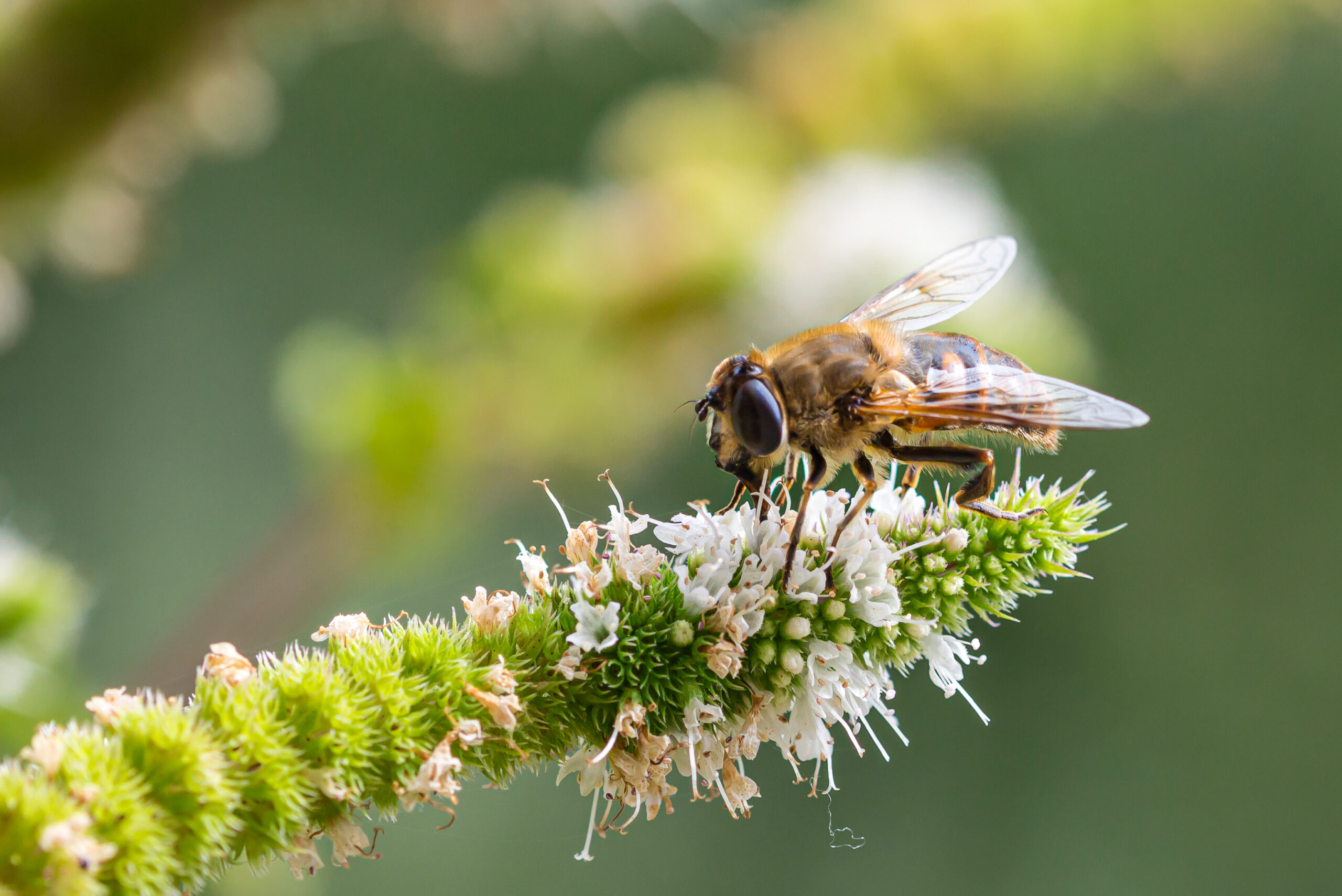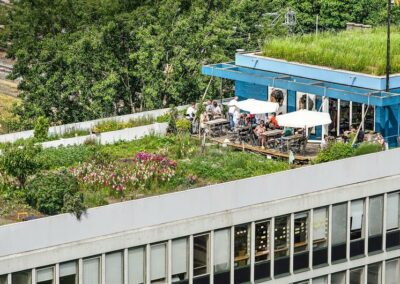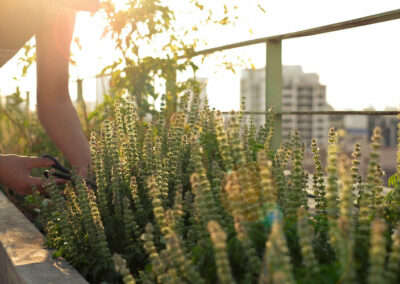Urban Biodiversity Targets Lay the Ground for Holistic Exploitation of Rooftops in European Cities

Macro of a honey bee (apis mellifera) on a mint (menta piperita) blossom. ID: 1574704057
In the Summer 2022 edition of Living Architecture Monitor (LAM), our managing director Luigi Petito reflects on how the the biodiversity strategy for 2030 – a comprehensive plan to protect nature, reverse the degradation of ecosystems and put Europe’s biodiversity on a path to recovery by 2030. The strategy recognises that greening urban and peri-urban areas is a refuge for nature and provides a wide range of benefits for people.
With nearly half of the EU population projected to live in urban areas by 2050, greening cities an increase urban biodiversity is a must.
The full article is available here.
The LAM magazine is a quarterly publication first published in 1998. It features in-depth interviews with leaders in the green building movement, opinions, research, and green roof and wall project profiles. Living architecture is the integration of living, organic systems with non-living, inorganic systems in, on, or around buildings. Living architecture is an important step to reconcile people and nature in the modern built environment.
In January 2020 we were asked to set up and run the European Chapter of the World Green Infrastructure Network. Another exciting task to improve the quality of urban areas and help cities to reconnect with nature.
Rue Philippe Le Bon 15
1000, Brussels, Belgium
+32 2 588 56 70
info@bs-europa.eu


